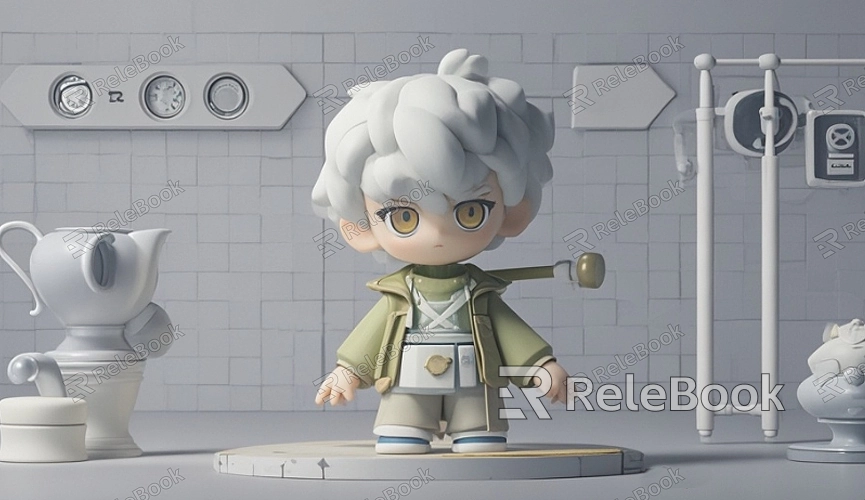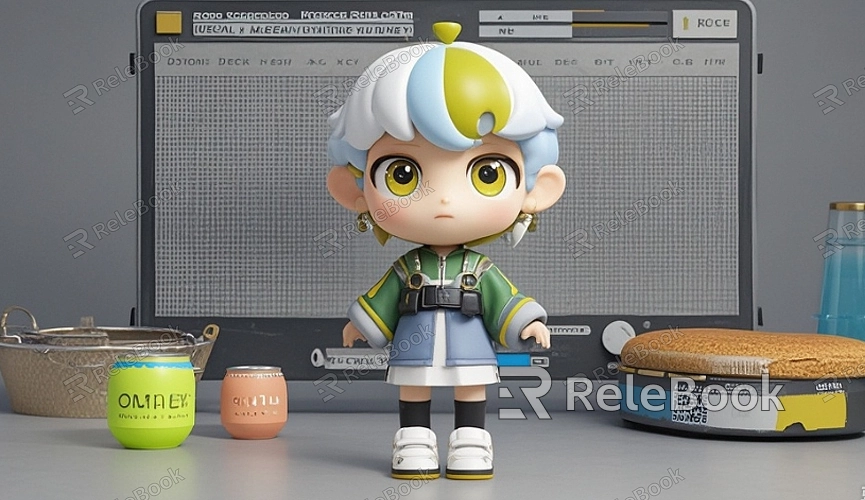How to Make a Texture for a 3D Character Model?

Getting Started with Texturing
To effectively create textures, you first need to grasp what they are and how they interact with 3D models. Textures are essentially images or patterns applied to the surface of a 3D model, adding detail and realism.
1. Types of Textures
Different types of textures serve various functions in defining the appearance of a 3D model:
Diffuse Maps: These define the base color and overall look of the model. They are the most straightforward type of texture.
Normal Maps: These simulate surface detail by altering how light interacts with the model’s surface, adding realism without changing the actual geometry.
Specular Maps: These determine the shininess or reflectivity of the surface, affecting how light reflects off the model.
Preparing Your 3D Model for Texturing
Before you start creating textures, ensure that your 3D model is properly prepared. Proper preparation is crucial for a smooth texturing process.
1. UV Unwrapping
UV unwrapping is the process of mapping a 3D model’s surface to a 2D plane so that textures can be applied accurately. This involves unfolding the 3D model into a flat 2D layout, which you can then paint or edit in a texturing application.
2. Cleaning Up the Model
Make sure your 3D model is free of unnecessary geometry and has clean, well-organized UV seams. This will help avoid issues like texture stretching or visible seams on the final model.

Creating Textures
Once your model is ready, you can start creating textures. This involves several steps, from painting to applying various texture maps.
1. Painting the Diffuse Map
Using software like Adobe Photoshop or Substance Painter, begin by painting the diffuse map. This map will provide the base color and pattern for your model. You can start with a blank canvas or use photo references to help paint realistic details.
2. Crafting Normal Maps
To create normal maps, you can use tools like Substance Painter or Blender. These maps will simulate surface details such as wrinkles, pores, or scratches without changing the model's geometry. Normal maps are typically generated from high-resolution models or painted directly in texturing software.
3. Generating Specular Maps
Specular maps control how shiny or reflective different parts of your model are. You can create these maps by painting grayscale images where white represents high reflectivity and black represents low reflectivity. Apply these maps in your 3D software to achieve realistic surface reflections.
Applying and Testing Textures
With your textures created, it’s time to apply them to your 3D model and test their appearance.
1. Applying Textures in 3D Software
Import your textures into your 3D software, such as Blender, Maya, or 3DS Max. Apply the diffuse, normal, and specular maps to the corresponding channels of your material settings. Ensure that the textures align correctly with the UV map and make any necessary adjustments.
2. Testing and Adjusting
Render your model in different lighting conditions to see how the textures perform. Check for issues like texture stretching, seams, or unrealistic reflections. Make adjustments as needed in your texturing software and reapply the textures to achieve the desired look.
Finalizing and Exporting
After testing and refining your textures, you’ll need to finalize and export them for use in your project.
1. Exporting Textures
Save your textures in appropriate formats, such as PNG or JPEG, depending on your project’s requirements. Ensure that the resolution and quality of the textures are suitable for their intended use, whether for a game engine, animation, or rendering.
2. Preparing for Integration
If your textures are part of a larger project, make sure they are organized and named consistently. This will help streamline the integration process and ensure that your 3D character model looks as intended in its final context.
Creating textures for 3D character models involves several steps, from understanding different texture types to preparing your model and applying textures. By following these guidelines and utilizing the right tools, you can create detailed and realistic textures that enhance the appearance of your 3D characters. For more high-quality 3D models and textures, visit the Relebook website to download the resources you need for your projects.
FAQ
What software is best for creating textures for 3D models?
Popular software options include Adobe Photoshop, Substance Painter, and Blender. Each has its strengths, with Photoshop being great for painting diffuse maps, Substance Painter excelling in creating detailed textures and normal maps, and Blender providing robust tools for all texturing needs.
How do I fix texture stretching on my 3D model?
Texture stretching often results from poor UV unwrapping. Ensure your UV layout is well-organized and that seams are placed strategically. You may need to adjust the UV map or repaint areas of your texture to address stretching issues.
Can I use photos as textures?
Yes, using photos as textures can be an effective way to achieve realistic details. Just ensure that the photos are high quality and that you properly align and edit them to fit your UV map.
What is the difference between a normal map and a bump map?
Both normal maps and bump maps add surface detail, but normal maps provide more accurate and complex detail by altering how light interacts with the surface. Bump maps only simulate surface texture by adjusting brightness and contrast.

